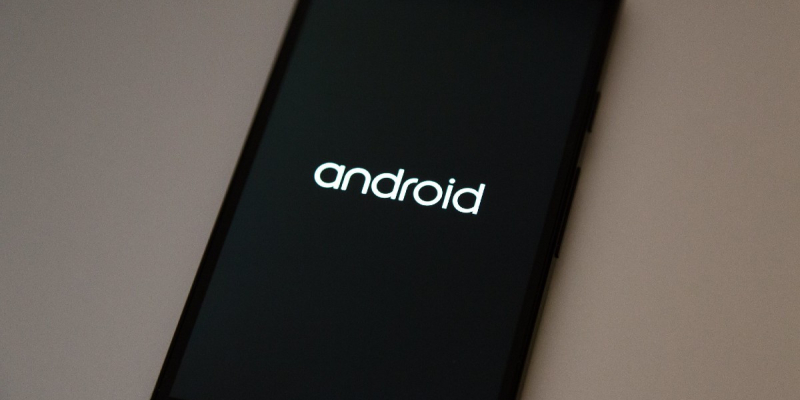
A new incredible release for all Android users was coming with a lot of exciting features! If you have not been following Android-related information, in early September, Google announced the release of a new Android 10. It comes up with a lot of new features, including the updated theme, security improvements, and so on. But first things first.
Android 10: release date, name, and other officials
Android 10 follow-up to 2018’s Android 9 Pie. The first stable release was launched on September 3, 2019, for Pixel devices. But during the first weeks, it moved to other partner devices. As a part of the ‘Evolving Android brand’ program, Google abandoned giving desert names to all new Android releases. Therefore, the new Android 10 was named Android Q. As the company stated, these actions were aimed at making it clear which Android version is newer, which is especially essential for the global market.
Also, with this release, Google announced an upcoming new version — Android 11 is planned to be released next year. In addition to changing the naming strategy, Google also updated the Android logo, changed the brand font, and made a new, modern color palette. And now let’s look more closely at the added technical, privacy, and design features.
Finally: A new dark mode!!
How it works
Dark mode is one of the most expected features coming with new release. A bit earlier, at I/O, the developer conference organized by Google in May 2019, they officially confirmed that new Android 10 will have a dark theme. It wasn’t the first Google’s experiment with dark mode, but officially, the company has made it only in Android 10. It enables users to change the color of the background to a darker one, reduce the eye strain symptoms, and save the battery charge.
How to enable it
Here is how to switch to a new mode:
- Find and press the Settings icon on the mobile phone;
- Scroll down and tap the Display option;
- In a new window, you can tune the brightness level, switch on/off the Night Light, enable Adaptive Brightness, change the wallpaper, and much more. The penultimate option in the list will be the Dark theme. To enable it, just put toggle to the “on” position and enjoy the new colors.
For those who prefer the quicker way, there is another way to change the color palette on the mobile phone — by adding this option to the Quick Settings panel. For this, pull down the top of your screen to open Quick Settings. After that, find the pencil sign on the bottom and tap on it. Then, you should notice the Dark mode icon — a small semi-filled circle. Just drag and drop the icon to Quick Settings panel. That’s all!
Looking for a way to answer the messages quicker? Here is the Smart Replay feature!
How it works
For Gmail users, this is not something new. They are already familiar with the smart replies. These are tips that pop up while replying to messages. Thanks to machine learning, Google analyzes the content of the letter and gives several answers to it. However, the new and most interesting thing is that now this option will be available not only in Google’s Gmail but also in other applications and messengers that do not even belong to Google, such as Facebook and What’s App. The short responses allow you to save time and make the answering process faster.
One of the most important and disturbing questions here is, of course, how safe is it? How will Google use my answers? What will happen to my privacy? We want to calm you: Android 10 uses only on-device machine learning algorithms, no information will be sent to Google servers.
How to enable it
You do not need to enable it. This feature has already been built into the new version of Android by default.
Hide distracting notifications with Focus Mode
How it works
One of the most important problems associated with mobile devices, social networks, and the Internet, in general, is their destructive effect on the focus and concentration of a person. Imagine the situation: you decide to monitor your diet and water intake. To do this, you installed an application where it is easy to keep a food diary and which also reminds you of the time of water intake. However, along with these, you get a ton of unnecessary notifications with advertising and other information that simply bothers you. It distracts from work and defocuses.
Google started dealing with this problem a few years ago, and last year they released Digital Wellbeing suite of tools that monitor your screen time and provide essential insights. In a new Android Q, they added a special extension — Focus mode. It allows you to select the applications you considered as distracting. Once you choose them (there are no limits on the number — you can select as many applications as you want), the Focus mode feature grays them out and hides their notifications.
How to enable it
First of all, the Focus mode isn’t available for all users. So, if you want to turn it on, you need to become a beta tester (you can easily do it on Google Play, then choose the Digital Wellbeing app). After that, follow these steps:
- Open the Settings tab;
- Find the Digital Wellbeing section;
- Press Digital Wellbeing & parental controls;
- Choose Focus mode;
- Select the apps you want to disable;
- Press the Turn on now button.
You can also add it to the Quick menu. The steps are the same as described in the New dark mode section.
More control over the location
How it works
As the privacy rules stated, third-party applications can get access to your location only if you granted them permission. Nothing has changed here. However, in this scheme, there is an Achilles' heel: the background access to the information. Android Q provides users several options. You can get access to the application to see the location when:
- You are using it;
- All the time (in the background);
- Restrict access.
For example, you have a food delivery app installed on a mobile phone. When you make an order, you most likely grant the app with permission to see your location. But once you exit, no one can see where you are (if you have the first level of permission). Therefore, it will be more logical to give the application permission to run in the background.
How to enable it
Open the Settings menu, scroll down and find the App permissions option. Here you can see how many applications have access to personal data on your phone, such as camera, calendar, contacts, body sensors, and so on. Find the Location option and tap it. Then you will see the applications that have access to it. You can manage them and grant with different levels.
Other exciting features
One of the reasons we like new Android Q OS is that it comes with a lot of REALLY exciting features and improvements. To describe all of them, we would need to write a book! But we can’t. Therefore, we decided to explain in fewer details other improvements and additions.
A new way to share Wi-Fi. WiFi passwords always mean trouble. People tend to forget them. It was one of the reasons Xiaomi and Huawei companies enabled an option of allowing users to share Wi-Fi credentials via QR codes several years ago. And now the time has come, Google adopted this technology in their new release of OS. It is pretty easy to use. Just tap on the Wi-Fi connection and press the Share button.
More gesture navigation. Android 10 has more improved navigation with gestures. Previously, to go back, you need to slide the finger upwards from the screen edge. But this feature doesn’t work well. Android Q has a so-called “peek” feature that aims to solve the problem.
Improved share menu. Android Q introduces “Sharing shortcuts” that allows developers to create a new item in the share menu. It will share the file with the external apps.
Improvements for foldable phones. Foldable phones have become real stars in the last few years. Their popularity also leads to changes necessary in the operating system. According to Google, Android 10 is more optimized for foldable phones and provides users with unique features and experiences. “We've made a number of improvements in Android Q, including changes to onResume and onPause to support multi-resume and notify your app when it has focus. We've also changed how the resizeable Activity manifest attribute works, to help you manage how your app is displayed on foldable and large screens”, - said the company representative .
What’s next?
Making a review for Android 10, we could not ask ourselves the question, what awaits us next year in the new Android 11? Android Q introduced the design and privacy improvements, machine learning applying, and other features. What’s next? What do you think? Share with us in the comments below.

